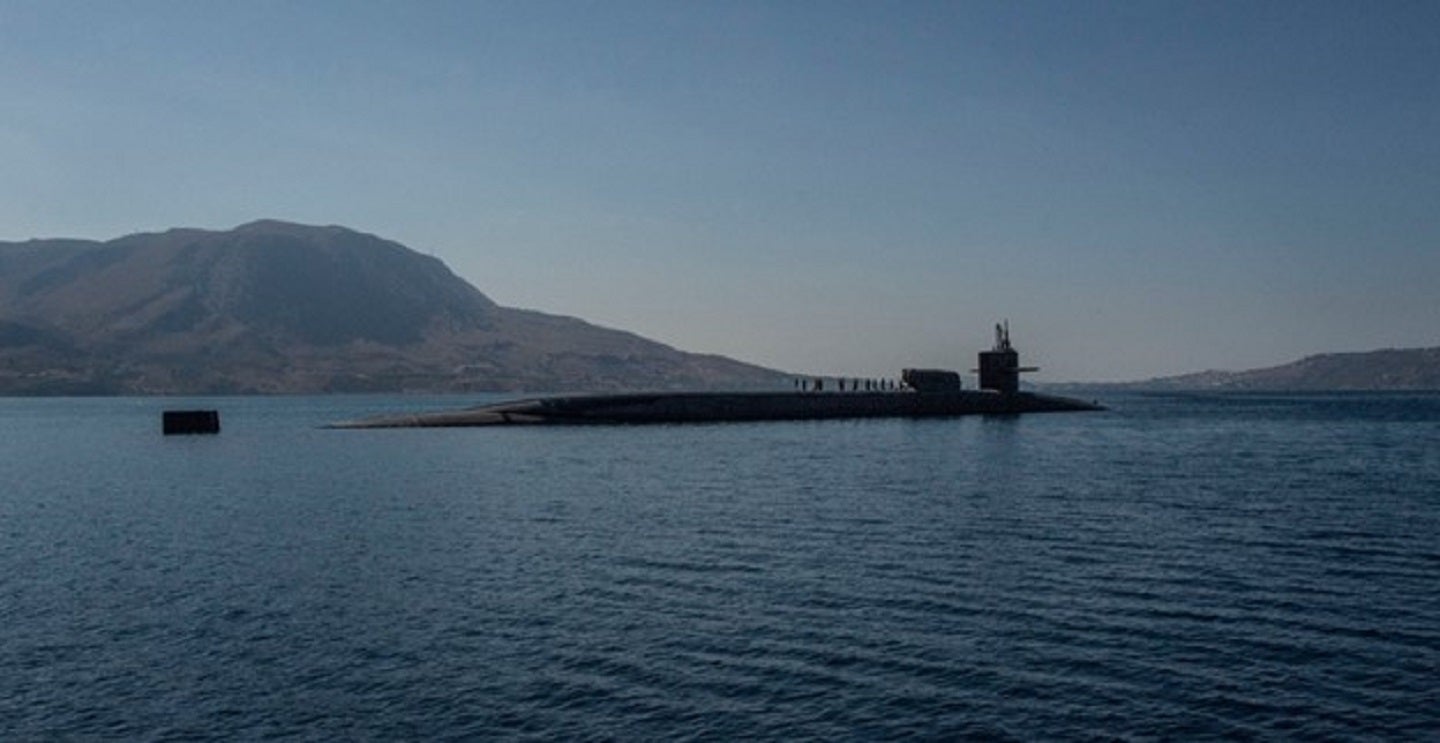
Late on 5 November, US CENTCOM posted an update on the social media platform X stating that the form of ‘deterrence’ it is taking against militant groups, such as the Iranian-backed Hezbollah group, in the Levant region has broadened in support of Israel.
Currently, Israel is engaged in a war against Hamas after the organisation’s surprise attack against the country on 7 October. Recent reports tell us that it has taken little over a week for the Israeli Defence Forces (IDF) to establish a perimeter around Gaza city.
The X post displays an image of what the US Department of Defense (DoD) Press Secretary, Brigadier General Pat Ryder, confirmed a day later to be an Ohio-class submarine.
Accompanying the image, CENTCOM provided an update, stating “an Ohio-class submarine [has] arrived in the US Central Command area of responsibility.”
This comes after the DoD recently streamlined its chain of command, bringing the Eisenhower Carrier Strike Group under the direction of CENTCOM for a faster response time to ongoing developments in the Middle Eastern conflict.
Diversifying US deterrence in the region
The decision to deploy an Ohio-class submarine comes as the latest form of US deterrence in a domain that Israel’s ally has not taken until now.
So far, the DoD has sent two Carrier Strike Groups to the Eastern Mediterranean, led by Ford and Eisenhower, and prepared US Air Force squadrons across the Middle East region.
A subsurface presence now serves to indicate the increased concern that the Israel-Hamas war may spill over into other areas of the region. Their object is to deter other militant groups that are eager to participate and broaden the conflict even further.
This decision follows the IDF intercepting “surface-to-surface cruise missiles” launched toward Israeli airspace from the “south-east” on 2 November. The implication is that the missiles were fired by Iranian-backed Houthis based in Yemen.
What is significant about the decision to send an Ohio-class submarine?
Another critical issue worth noting is the type of Ohio-class submarine that has been deployed. There are two types: the nuclear ballistic missile submarine (SSBN) and the conventional guided missile submarine (SSGN).
In September 2002, the original equipment manufacturer, General Dynamics Electric Boat, received a contract to convert USS Ohio (SSBN 726), Michigan (727), Florida (728) and Georgia (729) from SSBNs to SSGNs.
The boats were refitted with up to 154 Tomahawk land attack or Tactical Tomahawk (block IV) missiles and are also capable of conducting special operations missions with accommodation for Northrop Grumman advanced SEAL delivery systems, mission control centre and 102 special operation troops.
Northrop Grumman Electronic Systems is adapting the missile launch tubes, developing a multiple all-up round canister (MAC), which provides storage and launch of up to seven Tomahawk missiles from each of the submarine’s 22 missile tubes. The SSGN submarines are also fitted with the Raytheon AN/BYG-1 combat data system.
On the other hand, SSBNs are equipped with Trident nuclear ballistic missiles from Lockheed Martin Missiles and Space. The submarines received the new D5LE missiles in 2013 under the D5 life extension programme. The new missiles are expected to remain in service till the 2040s.
In a 6 November DoD press briefing, Ryder did not reveal whether the Ohio-class submarine deployed to CENTCOM area of responsibility was an SSGN or SSBN – this dispels recent reports speculating the deployment of the latter.
Our signals coverage is powered by GlobalData’s Disruptor data, which tracks all major deals, patents, company filings, hiring patterns and social media buzz across our sectors. These signals help us to uncover key innovation areas in the sector and the themes that drive them. They tell us about the topics on the minds of business leaders and investors, and indicate where leading companies are focusing their investment, deal-making and R&D efforts.



